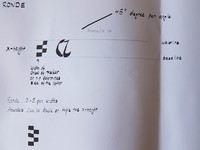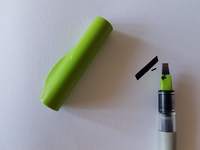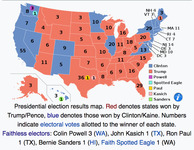 |
| Angelika/Mike Schilli |
|
Angelika From our school days, everyone surely remembers the uplifting feeling of upcoming summer holidays. When all the exams were done and six long weeks of doing nothing and letting oneself drift lay ahead. As an adult, one rarely gets to enjoy this anymore. Semester breaks in college were not bad either, but for me, they were always filled with mandatory internships. But this summer, after decades, I finally had a long summer break again because I now work at a school, and even in the US, there are generous summer breaks or, more precisely, a stretch of time without classes. At our school, we had a whopping nine weeks off. It was wonderful. Just like in school days, there was nothing better for me than to read and immerse myself in the world of books. I had planned on reading a book every week during my time off, and I actually managed to do that. I read a colorful assortment of crime novels, non-fiction books, technical books, and, of course, novels.
Then I fulfilled my dream of attending a calligraphy course. I belong to a generation for whom learning cursive writing was a top priority in school. Unfortunately, this cultural technique is threatened with extinction, as it is believed that in the digital world, typing and print writing take precedence over cursive writing. In the US, many students no longer learn cursive because it has been removed from the curriculum. However, there is hope, as cursive writing is currently experiencing something of a comeback in schools here, since it has been found that it is not just about beautiful handwriting. Learning cursive not only helps with fine motor skills but also enhances memory and improves text comprehension. Students who write in cursive construct better texts than when they type them.
But I digress. My strict but fair elementary school teacher, Mrs. Hibben, not only ensured that we wrote all the loops, ascenders, and descenders in the correct order, but also insisted on good penmanship. In high school, my class teacher, Mr. Senst, was so impressed with my handwriting that he advised me to pursue a career in calligraphy. It's hard to believe that it took me decades to finally enroll in a course. I took this course as another class at the "Center for the Book" in San Francisco (Rundbrief 04/2007).
My writing attempts in the course strongly reminded me of my elementary school days. We learned the Ronde script, which originated in 16th century France and is relatively easy for beginners to learn. What fascinated me is that calligraphy is truly a science in itself. The type of script defines the letter size and the angle at which the writing tool must be held. Then there are all sorts of rules on how to connect the letters and, of course, a huge selection of different writing instruments, from fountain pens to nibs, to calligraphy pens with different nib widths. I particularly liked the so-called parallel pen, whose nib is not pointed at the front but broad, and which comes in different nib widths. In any case, the course was a lot of fun, and now it's clear that practice makes perfect.
Of course, I also used my summer vacation to complete various projects that I never have time for otherwise, and to visit family and friends. And just like that, the nine weeks were over, and the seriousness of life resumed.













